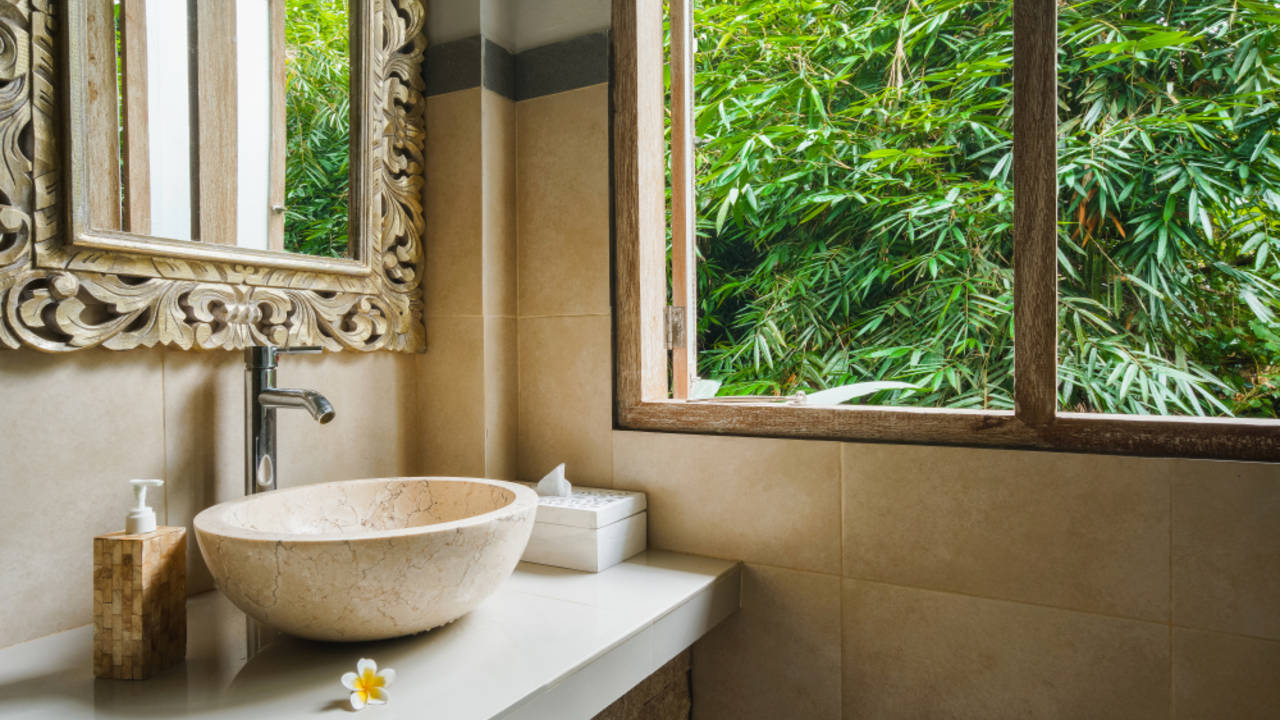If online DIY forums are any indicator, there are millions of homeowners out there desperate for ways to control a range of unpleasant issues caused by excessive, trapped moisture, particularly in the bathroom. Yet many of these issues can have been minimized, or avoided altogether, by taking a more proactive approach to controlling bathroom moisture from the start.
Once moisture permeates your bathroom walls, it’s too late for prevention, and a host of much bigger issues— including mold, mildew, crumbling grout, loosening tiles, water staining, wet insulation, and wall rot—are likely not far behind. In this particular environment, it goes without saying that eliminating moisture at the source is not an option, but there are other methods you can employ to mitigate excessive humidity in your bathroom.
Ventilation is Key
If your bathroom doesn’t have a fan, opening a window can improve ventilation tremendously, but this is not always a viable option for homeowners living in a four-season climate. Ideally, your bathroom windows should be well insulated, double-paned, and contain an inert gas fill to minimize condensation. Opening the bathroom door to release the steam is not an advisable option, as it allows moisture to travel throughout the rest of the house.
For windowless bathrooms, it’s vital to have a fan that is properly vented to the outside and has a good extraction rate. Keep the fan running before, during, and at least 20 minutes after every bath or shower. You can also configure the switch and wiring so that the fan will come on automatically every time the bathroom light does. It might seem obvious, but keeping your fan clean will ensure optimal performance.
As a last resort, a dehumidifier can provide relief and help prevent further moisture damage in the short term. If your bathroom isn’t too big, a mini-dehumidifier may still do the trick. If a larger unit is needed, renting one for a week or two while a long-term solution is found might be a more cost-effective solution.
Turn Up the Heat
Here are some strategies your household could employ to minimize condensation and moisture in your bathroom:
- Turning up your thermostat can help mitigate bathroom moisture by warming up mirror and wall surfaces and reducing condensation.
- Depending on the size of your space, a heated towel rail or 120-watt tubular heater could also provide enough warmth to do the trick.
- Consider investing in a fog-free mirror. Fitted with heating pads in the back to keep the surface warm, these mirrors stay conveniently clear of condensation.
A Common Sense Approach
These tips may seem obvious, but are they? Make sure not to overlook the tiny living adjustments you can make to solve your moisture woes, such as:
- Take cooler, shorter showers and baths.
- Fix additional sources of moisture, such as leaky faucets.
- Remove damp bath mats and towels from the room as quickly as possible.
- Replace fabric curtains with blinds.
- Wipe down as many surface areas in the room as possible after a steamy bath or shower.
Test Drive Moisture-Controlling Products
Today, there are fungicide-based paint formulas that can be applied to walls and ceilings to prevent condensation. Also, even as a comparatively cost-effective solution, many homeowners have reported surprisingly impressive results using moisture-absorbing products and compounds, like DampRid. Please note, though, that these solutions will only control the problem temporarily, not eliminate it entirely.
Renovate Right
If you are thinking about renovating your bathroom, do your homework and make sure the contractor you hire is knowledgeable, experienced, and thorough. Things like air sealing, ventilation, insulation, air movement, and the overall integrity of your home’s building envelope are all factors to be taken into account. Plumbing and bath fixtures should be positioned to allow for better air circulation within and around them, to allow for better moisture control and easier maintenance.
No matter what steps you take to control bathroom moisture and humidity, keep in mind that solutions and results will vary from climate to climate. The same treatment that works like a charm for a Southern California home with consistently warm walls may not be as effective for a similarly constructed home in a four-season climate like Chicago. No matter where you live, though, make sure to invest your money in quality fixtures and surfacing materials capable of withstanding excessive moisture. Some premium fixture lines, like Kohler bathtubs, are designed with heated surfacing, not only to mitigate moisture but also to improve muscle therapy for the body’s most notorious pain and pressure points.
With so many options available, finding the right solutions to curb the excess humidity in your bathroom may be a matter of trial and error. Moisture issues in any part of the home are rarely an easy fix, but by taking a patient, methodical approach, your odds of wrestling the menace of moisture into submission—for good—are far better than you think.


Comments(0)